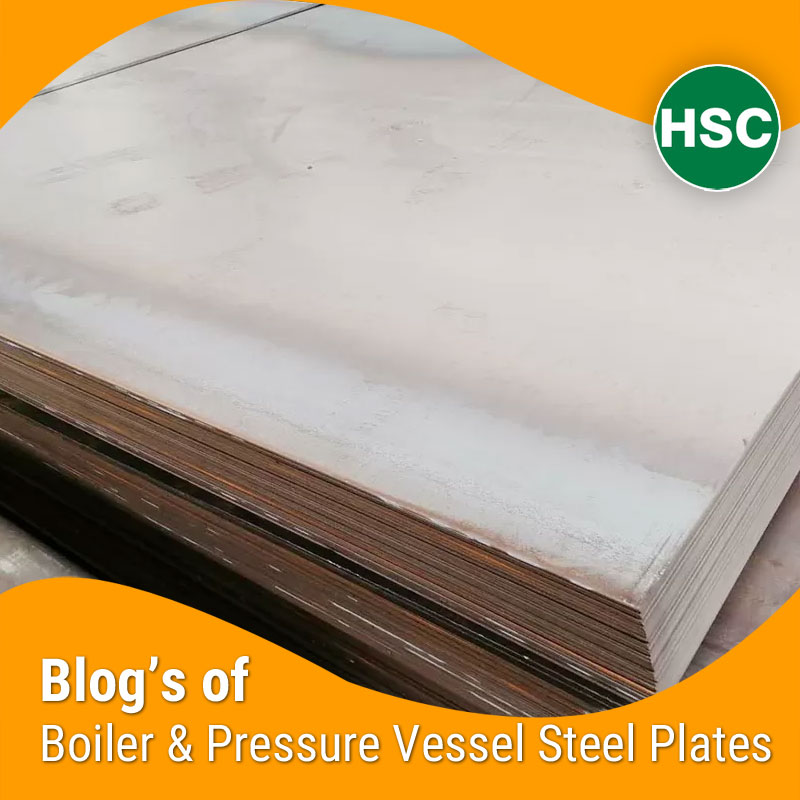What Is A516 Gr 70 Steel and Why It Needs Specific Welding Care?
ASTM A516 Grade 70 is a carbon steel pressure vessel plate with moderate strength, excellent notch toughness, and good weldability. It’s widely used in:
- Boilers
- Heat exchangers
- Pressure vessels
- Steam drums
Its carbon-manganese composition makes it weldable, but welding parameters must be carefully selected to avoid cold cracking, distortion, or reduced toughness in the HAZ (Heat Affected Zone).
Is A516 Gr 70 Easy to Weld?
Yes, A516 Gr 70 is generally considered easy to weld using most arc welding processes such as:
- SMAW (Shielded Metal Arc Welding)
- GMAW (MIG)
- SAW (Submerged Arc Welding)
- GTAW (TIG)
However, preheat and post-weld heat treatment (PWHT) may be needed depending on plate thickness and service condition.
Welding Applications in Boilers & Pressure Vessels
Welding A516 Gr 70 is common in:
- Seam welds on boiler shells
- Head-to-shell joints
- Saddle connections in heat exchangers
Internal tube-sheet weldments
Fabricators must ensure code compliance with ASME Section IX or IBR (if used in India).
Preheat Recommendations for A516 Gr 70 Welding
| Plate Thickness | Preheat Temperature |
|---|---|
| < 25mm | Not mandatory but recommended: 50–70°C |
| 25–50mm | 100–150°C |
| > 50mm | 150–200°C (especially in cold environments) |
Avoid moisture absorption in thick plates to prevent hydrogen-induced cracking.
Best Welding Electrodes and Filler Metals for A516 Gr 70
Choose electrodes/fillers compatible with low-carbon pressure vessel steels:
| Welding Process | Recommended Electrode/Filler |
|---|---|
| SMAW | E7018 (low hydrogen) |
| GMAW | ER70S-6 |
| SAW | F7A2-EM12K |
| GTAW | ER70S-B2 (for alloyed weldments) |
Low-hydrogen electrodes must be baked and stored dry.
Post-Weld Heat Treatment (PWHT) – When Is It Required?
PWHT is not always required for A516 Gr 70. But it is recommended when
- Thickness > 50mm
- For hydrogen-sensitive environments
- When mandated by ASME, IBR, or client specification
Standard PWHT: 600–650°C for 1 hour/inch of thickness
Common Welding Defects and How to Avoid Them
| Defect | Prevention |
|---|---|
| Porosity | Use low-hydrogen electrodes, clean surfaces |
| Cracking | Preheat & control cooling rate |
| Undercut | Use correct voltage & travel speed |
| Lack of fusion | Proper amperage and torch angle |
NDT like UT, RT, and MT must be applied per project specs.
Compliance with ASME / IBR / ISO Standards
We supply A516 Gr 70 plates that comply with:
- ASME Sec II / IX welding qualifications
- IBR Form IIIA for Indian steam service
- ISO 15614 (welding qualification procedures)
FAQs for Welding Guidelines for A516 Gr 70
Can A516 Gr 70 be welded without preheating?
Yes, but preheating is advisable above 25mm thickness to avoid cracking.
What is the best electrode for A516 Gr 70 welding?
E7018 is the most commonly used low-hydrogen electrode for this steel.
Do I need PWHT for A516 Grade 70 plate welding?
For most boiler-grade welds above 50mm or in harsh environments, PWHT is recommended.
Is A516 Gr 70 weldable using TIG welding?
Yes, TIG welding (GTAW) is suitable for root passes or thin plates.
Can A516 Gr 70 be used for LPG tanks after welding?
Yes, provided it passes the weld test, stress relief, and UT/NDT procedures.

